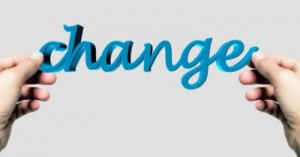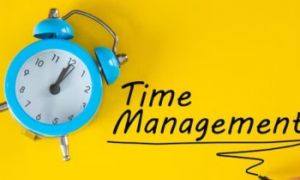Intentional consideration is such a powerful practice — where every interaction and choice can shape a child’s experience. At its heart, it’s about pausing to purposefully reflect before acting, planning, or responding. It's the difference between doing something because “we’ve always done it that way” and doing it because it's best for the children, families, and community you serve.
Embedding Into Daily Practice
Here’s how intentional consideration can be embedded into daily practice:
- Planning with Purpose: Instead of filling in templates just to meet compliance, consider why you’re selecting certain goals or experiences. Are they culturally responsive? Do they scaffold children’s agency or wellbeing?
- Reflective Questioning: Before implementing a strategy, ask yourself or your team: “Does this align with our values and the EYLF principles? Who might be left out by this approach?”
- Responsive Interactions: Take a breath before redirecting behaviour. Consider the child’s emotional state, their perspective, and what your response teaches them about trust and connection.
- Environment as the Third Teacher: Be deliberate about the visual messages your environment sends. Does it reflect belonging, curiosity, and inclusivity? Are diverse identities celebrated intentionally, not just seasonally?
How To Start Using Intentional Consideration
Starting to use intentional consideration is like switching on a spotlight in your practice—it helps you notice the “why” behind the “what.” Here’s how you can ease into it thoughtfully and practically:
1. Begin with Reflective Awareness
- At the end of each day or week, pause and ask: Which decisions today felt intuitive? Which ones were reactive?
- Use prompts like, “What influenced that response?” or “Whose voice was centered or missing?”
2. Build It into Planning
- Add a column or space in your planning documents labeled “Intentional Consideration” where you can jot down:
- Why you’re choosing certain experiences or strategies
- How they align with children’s interests, cultural identities, or learning goals
3. Make It Part of Team Conversations
- During team meetings, introduce reflective prompts like:
- “What message are we sending through this display or activity?”
- “Is this responsive to our current group of children, or are we doing it out of habit?”
4. Slow Down Responses to Children
- When guiding behaviour or mediating conflict, take a micro-pause. Ask yourself:
- “Am I responding to the behaviour or the need behind it?”
- “How can this moment strengthen connection?”
5. Document with Depth
- In learning stories or assessments, include a brief reflection like:
- “This experience was chosen because it invited peer collaboration, aligning with our focus on social competence.”
6. Start Small and Celebrate
- Pick just one area—transitions, play provocations, or environment setup—and start there. Share wins with your team when a small shift makes a big impact.
How To Document Intentional Consideration
Documenting intentional consideration is all about capturing your thinking behind the doing. It allows others—whether they’re families, educators, or assessors—to see the values and thoughtful choices that guide your work. Here are several ways you can meaningfully document it:
In Program Planning Templates
Add a section or prompt like:
- “Why have we chosen this experience?”
- “How does this plan respond to the current needs, interests, or cultural identities of children?”
You might use a simple note:
"This sensory experience supports Amara's need for regulation after transitions and builds on her recent interest in textures."
In Learning Stories
Use a short paragraph that reflects your thought process:
“We chose to extend the group’s play around ‘family’ because several children have recently talked about visiting grandparents. It allows space to explore belonging and cultural identity.”
It helps connect observations to both intentionality and EYLF outcomes.
In Critical Reflection
In team meetings or weekly reflection notes, include:
- “What decisions this week were made with intentionality?”
- “How did we ensure inclusive, meaningful engagement in this experience?”
This not only supports practice improvement but links beautifully to NQS QA1 and QA5.
Visual Displays
On documentation boards or portfolios, you might include a small “Behind Our Choices” blurb:
“We intentionally added quieter, earth-toned materials to this space to promote calm during morning transitions.”
For Educator Growth
Use intentional consideration as a journaling or mentoring tool. Prompts like:
- “What values shaped your approach to today’s challenges?”
- “How did you bring intentionality into your interactions with families?”
Practical Examples Of Intentional Consideration
Here are some tailored examples of how intentional consideration can be documented across different areas of your practice—clear enough for families and educators, yet deep enough to reflect professional insight and alignment with EYLF and NQS:
Learning Story Example
“After observing Zara consistently choosing solitary activities during group times, we introduced a quiet group game that honored her preference for calm while gently fostering peer interaction. This intentional decision supports her emotional maturity and strengthens her sense of belonging within the group (EYLF Outcome 1 & 3).”
Planning Documentation Example
Experience: Dramatic Play – Bush Tucker Café
Intentional Consideration:
“This setup acknowledges the children’s recent conversations around NAIDOC Week and bush foods. It reflects our commitment to embedding Aboriginal perspectives and encourages respectful curiosity. The language opportunities also support our current literacy focus.”
Critical Reflection Example
Focus: Morning Transitions
“We noticed that several children were unsettled during drop-off. Rather than jumping into routines, we’ve slowed our pace to offer one-on-one welcomes. This intentional shift prioritizes emotional safety and strengthens our relationships with families. Team reflection next week will revisit its impact.”
Visual Display Label Example
“We chose these earth-toned materials and dimmed lighting in this cozy space to support regulation and reduce sensory input during busy parts of the day. This intentional environment design aligns with our goal to foster calm and self-awareness.”
Educator Journal Prompt Response
“Today, I chose to remain on the floor at children’s eye level during conflict resolution. This shift felt small but changed the tone of the exchange. It reminded me how physical presence can convey respect and reduce power imbalance—something I want to sustain.”
Further Reading
Q: Do We Need To Reflect On All Learning Stories, Work Samples, and Observations?







 As an Educator in Australia, your pay rate falls under the Children’s Services Award 2010. This award states the minimum amount that an employer can
As an Educator in Australia, your pay rate falls under the Children’s Services Award 2010. This award states the minimum amount that an employer can When working as a qualified Early Childhood Teacher (with a university degree) within a service, your rate of pay will come from the Educational Services
When working as a qualified Early Childhood Teacher (with a university degree) within a service, your rate of pay will come from the Educational Services When working as a Diploma Qualified Educator your pay rate is from the Children's Services Award 2010. This Award states your minimum rate of pay
When working as a Diploma Qualified Educator your pay rate is from the Children's Services Award 2010. This Award states your minimum rate of pay When working as a Cert 3 Qualified Educator, your pay rate is from the Children's Services Award 2010. This Award states your minimum rate of
When working as a Cert 3 Qualified Educator, your pay rate is from the Children's Services Award 2010. This Award states your minimum rate of Educational Leaders play a crucial role in their early childhood service by ensuring that the educational program aligns with best practices and supports the holistic
Educational Leaders play a crucial role in their early childhood service by ensuring that the educational program aligns with best practices and supports the holistic In early childhood education and care, ratios are more than a technicality—they are a frontline safeguard. Every child deserves responsive supervision, emotional connection, and developmental
In early childhood education and care, ratios are more than a technicality—they are a frontline safeguard. Every child deserves responsive supervision, emotional connection, and developmental Here’s a comprehensive Mobile Phone and Smart Watch Policy tailored for early childhood education and care (ECEC) services in Australia, aligned with the latest 2025
Here’s a comprehensive Mobile Phone and Smart Watch Policy tailored for early childhood education and care (ECEC) services in Australia, aligned with the latest 2025 With the new national child safety reforms kicking in on 1 September 2025, early childhood services like yours have a real opportunity to lead the
With the new national child safety reforms kicking in on 1 September 2025, early childhood services like yours have a real opportunity to lead the The Sea of Fish Challenge is a national initiative that invites children, educators, families, and communities to create and display fish artworks as a symbol
The Sea of Fish Challenge is a national initiative that invites children, educators, families, and communities to create and display fish artworks as a symbol Across the early childhood education and care sector, educators are sounding the alarm: current staffing ratios are insufficient to deliver safe, meaningful, and developmentally appropriate
Across the early childhood education and care sector, educators are sounding the alarm: current staffing ratios are insufficient to deliver safe, meaningful, and developmentally appropriate


